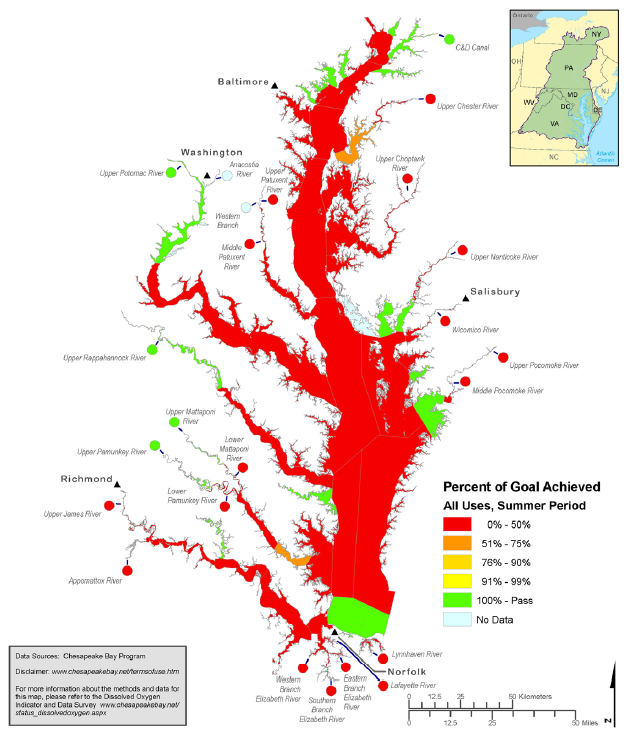Graph of the Day: Dissolved Oxygen Percent of Goal Achieved in Chesapeake Bay, Summer 2007 – Summer 2009
Most of the Chesapeake Bay fails to meet dissolved oxygen goals in the Summer. From 2007 to 2009, only 12 percent of the Chesapeake Bay had sufficient levels of dissolved oxygen in the summer. The National Oceanic and Atmospheric Administration (NOAA) describes the Chesapeake Bay as “highly eutrophic,” meaning that it is highly susceptible to nutrient-fueled algae blooms that deprive the waterway of oxygen. In addition to consuming oxygen in the water and creating dead zones, algae blooms can block sunlight that aquatic grasses need to survive. Without sunlight, the grasses die, triggering other problems for the Bay’s ecosystem. Roots of grasses are no longer available to hold sediment in place, increasing the risk that oysters will be buried in silt. Blue crabs and fish such as menhaden, herring, shad, and white perch lose hiding places and a place to shelter their young. And the grasses are no longer available to replenish dissolved oxygen levels as they photosynthesize. In 2009, 86,000 acres in the bay were covered with grass, less than half the amount of grass needed for a healthy bay. Years of summertime dead zones, overfishing, and the death of submerged aquatic vegetation have taken their toll on the bay’s aquatic animals. Populations of rockfish, or striped bass, have dropped so much that Maryland and Virginia both imposed moratoria on the fishery in the late 1980s. The moratoria have since been lifted, but catch levels remain low. Oyster and soft shell clam populations have declined to a fraction of their historic levels, while the federal government officially declared the blue crab fishery a disaster in 2009, granting emergency aid to the industry.

that looks like a beautiful branch of red coral.
It's All Good!